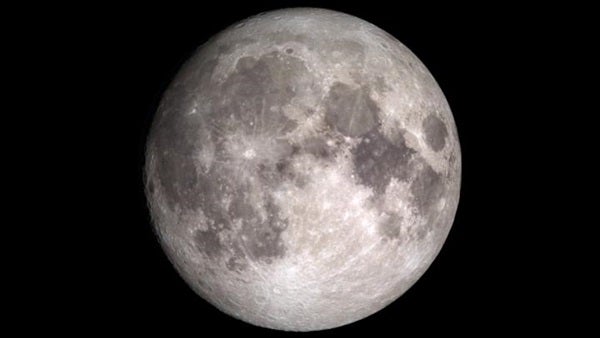Although Earth is known for its expansive oceans, lakes, and rivers, it might not be the only body in the neighborhood with sprawling water molecules. A new study published in Nature Geoscience found that the Moon’s water isn’t restricted to certain landscapes or regions, but is rather dispersed broadly over its surface. The total amount of water and its accessibility are unknown, but if the stars align, future missions could potentially use it as drinking water, convert it to oxygen for breathing, or use it as rocket fuel by converting it to oxygen and hydrogen.
“We find that it doesn’t matter what time of day or which latitude we look at, the signal indicating water always seems to be present,” said Joshua Bandfield, senior research scientist at the Space Science Institute in Boulder, Colorado, and lead author of the paper, in a press release. “The presence of water doesn’t appear to depend on the composition of the surface, and the water sticks around.”
Previous studies found that the Moon’s polar latitudes appear more water-rich than other regions, and that the amount of water in a given region depended on the lunar day (29.5 Earth days). These results make researchers wonder if water molecules travel to the Moon’s north and south poles and end up in “cold traps” within craters — areas so cold that water vapor inside them freezes and is unable to escape for significant periods of time, possibly billions of years.
However, this new theory has been brought into question based on the methods used to obtain the results. Most studies of water on the Moon use remote-sensing instruments to measure the amount of sunlight reflecting off of the Moon’s surface. These instruments look for spectral lines associated with water at wavelengths of about three micrometers, which falls into the infrared portion of the spectrum, rather than visible light. The problem is that the Moon is capable of producing its own infrared radiation if its surface gets hot enough, making it difficult to tell which radiation comes from heat and which is produced by water.
The new study set out to differentiate the sources of radiation by using data from NASA’s Lunar Reconnaissance Orbiter’s Diviner instrument to create an in-depth model of the Moon’s temperatures. They took data that had been previously collected by the Moon Mineralogy Mapper, a visible and infrared spectrometer on the Chandrayaan-1 orbiter, and applied it to the model.
Their model suggests that water on the lunar surface is rather motionless and doesn’t favor one type of landscape over another, which implies that its primary form might actually be hydroxyl (OH). OH is a similar compound to H2O and is composed of a hydrogen atom and an oxygen atom. OH has a tendency to latch onto or fuse with other molecules, meaning that it doesn’t move around much and that we would have to extract it from minerals to use it.
Despite the information gained in the study, where the Moon’s OH and/or H2O came from remains a mystery. While it’s widely believed that it formed when hydrogen from solar wind came in contact with oxygen housed in Moon rocks, the researchers aren’t disregarding the possibility that it’s been there all along, and is just now being released from the minerals that locked it in during the Moon’s formation.
The discovery of widespread OH and/or H2O not only allows us to consider its usage on future lunar missions (with extensive research beforehand, of course), but it also gives a better understanding of our closest, but still slightly mysterious, neighbor.










